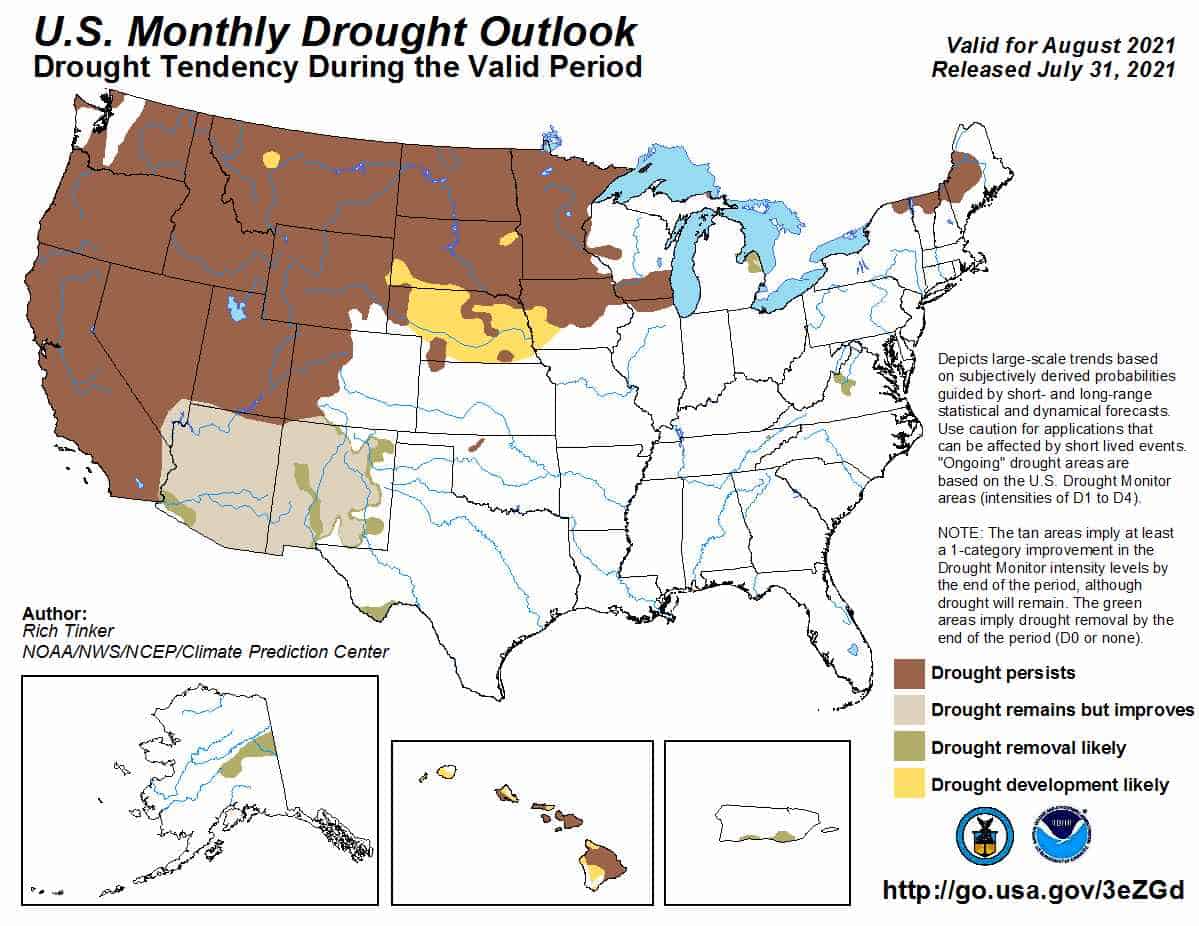Arizona’s monsoons have delivered much-needed rain last month throughout the state, with Tucson reporting a record breaking eight inches of rain.
On July 30, Tucson’s News 4 reported “Prior to tonight, the wettest month on record was 7.93 inches, set back in August 1955. Records at Tucson go date back to 1894.”
Because of wildfire burn scars, the deluge of rainwater created flash flooding in the mining towns of Globe and Miam i the past few days. Other parts of the state, like Flagstaff
i the past few days. Other parts of the state, like Flagstaff , also experienced flash flooding over the month. But the monsoons also brought much-needed drought relief to the state.
, also experienced flash flooding over the month. But the monsoons also brought much-needed drought relief to the state.
Drought Outlook Improves for Arizona and New Mexico.
With the monsoons, the U.S. Drought Monitor’s August 2021 outlook shows that while the drought remains, the outlook has improved for both Arizona and New Mexico.
As to Arizona, “recent monsoon rain has had a significant impact for the better,” US News & World Report wrote, noting that “52% of Arizona [is] in either extreme or exceptional drought, down from 84% last week.” The Arizona Department of Water Resources
wrote, noting that “52% of Arizona [is] in either extreme or exceptional drought, down from 84% last week.” The Arizona Department of Water Resources (ADWR) also had favorable news, reporting that “Monsoon rain can help rehydrate our soils, which helps get snowmelt runoff into the reservoirs. Also, some portion infiltrates into the ground and replenishes the aquifers. Not a lot, to be sure, but some.”
(ADWR) also had favorable news, reporting that “Monsoon rain can help rehydrate our soils, which helps get snowmelt runoff into the reservoirs. Also, some portion infiltrates into the ground and replenishes the aquifers. Not a lot, to be sure, but some.”
The Drought Is Not Over.
While the rain and cooler weather that comes with it is welcome, ADWR pointed out that this year’s record-breaking monsoon season is not an end to the decades-long drought. “[T]ruth be told, summer storms just aren’t drought-killers. Fending off drought – especially the kind of long-running drought the Southwest has experienced — takes deep winter snowpack in the region’s mountainous watersheds. After more than two decades of dry conditions, it would take several consecutive years of deep snowpack to release from drought’s grip.”
The monsoon season continues until September 30.


Leave a Reply